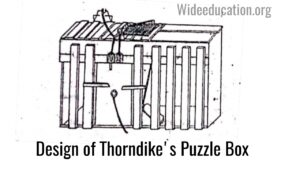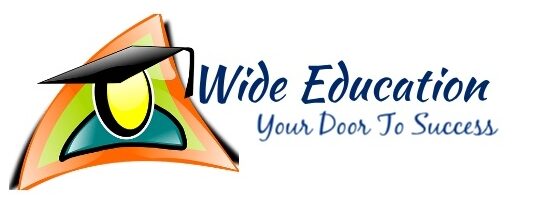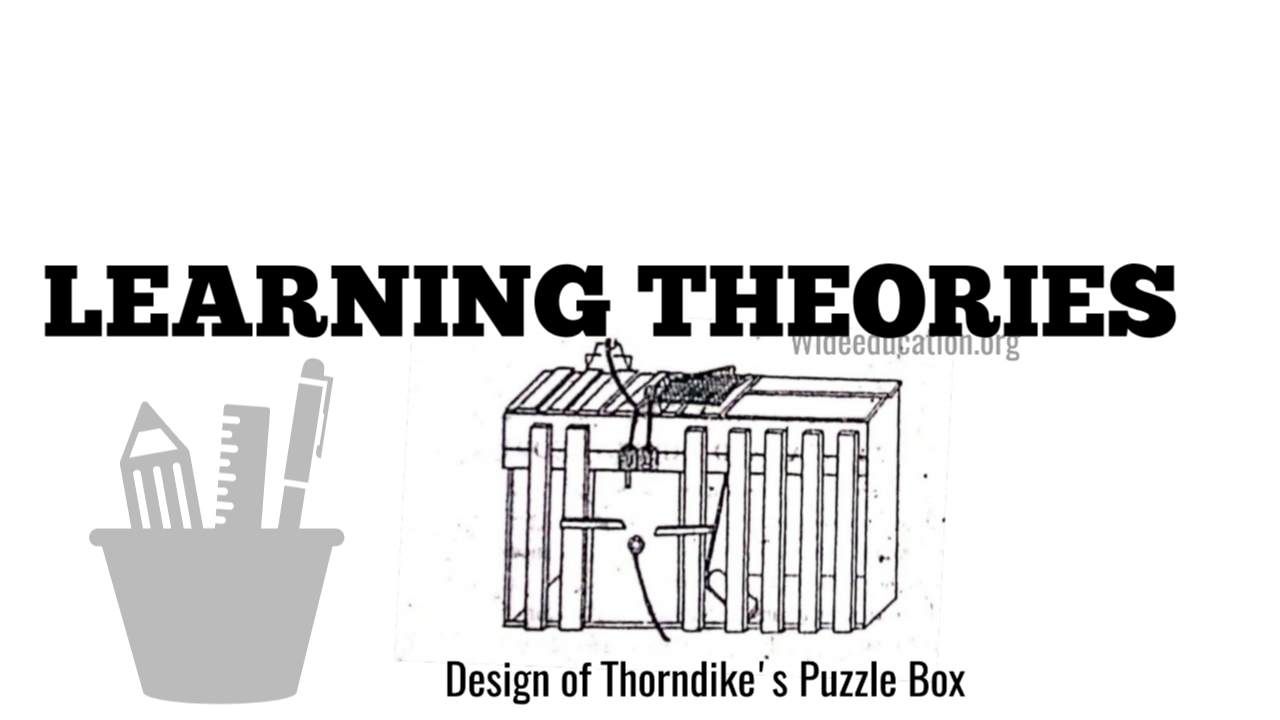Learning Theories
Table of Contents
INTRODUCTION
Learning Theories or Pavlov Theory is the process of acquiring knowledge from past experience . To learn any thing we need our sense to process the information around us.Learning theory describe how a living being absorbs and process knowledge during learning .The discussion on various theories of learning raise certain doubts on their validity. It is sometimes argued that since these theories have developed on the basis of experimentation with the animals, their results cannot be fully applied to human beings. Secondly, different interpretations about learning psychology many a time show disagreements. Whatever the reason, it would not be a useful approach to ignore important theories of learning and their educational implications. These theories will, at least, help us to spell out fundamental conditions favourable to the learning process.
Four of the most popular theories are described below. These are:
I.Trial and Error Theory (Connectionist Theory)
II. Conditioned Response Theory (Behaviourist Theory of Eeaming)
(A) Classical Conditioning (Pavlov)
(B) Operant Conditioning (Skinner)
III. Learning by Insight Theory (Gestalt Theory of Learning)
(I) Trial And Error Theory/Learning Theories or Pavlov Theory
Pavlov Theory place gradually by the process of trial and error.
Thus, according to Thorndike, learning takes place through a process of appraximatlon and correlation. For learring something, a person makes a number of trials, some responses do not give satisfactory results, but he goes on making further trials till he gets satisfactory response
Thorndike’s Puzzle Box Experiment:

Thorndike studied the character of Trial and Error learning in a number of experiments on cats. The use of a specially designed puzzle, box, shown below, was a favourite device with him.
In one among the experiments a hungry cat was placed within the box and therefore the door was closed. A fish was placed outside the box The cat was given 100 trials, ten each morning and ten each afternoon for five days. The cat was fed at the end of the each experimental period. Afterwards, she was given nothing more to eat until the next session. If after opening the door in any trial by jumping or by chance, she rushed immediately to the food, she was allowed only a small cask. Acomplete record of the cat’s behaviour during each trial was registered
(A) Classical Conditioning
The principle of conditioning was formulated by the Russian physiologist Ivan Pavlov in 1909.This is nothing but conditioning. Simply conditioning is the process by which an association between a stimulus and response is learnt.
Experiment: This experiment is conducted by Ivan Pavlov. A dog was kept hungry for a few days, and it was tied to the experimental table. Pavlov ring the bell every time before he was giving food to the dog . After getting food the dog salivated. ‘It was measured upto some trials the dog didn’t get food but the bell has been ringing. The dog still salivating with out food. So the dog was conditioned by conditioned stimulus i.e., bell.
Major Concepts
Before conditioning:
Food (Unconditioned stimulus)———–Salivation (Unconditioned response)
Bell (Conditioned stimulus)————- No Salivation
After conditioning:
Bell (Conditioned stimulus)————-Salivation (Conditioned response)
Unconditioned Stimulus———UCS
Conditioned Stimulus———CS
Unconditioned Response———UCR,Conditional Response CR
Principles of Classical Conditioning:
1: Reinforcement
When the conditioned stimulus (bell) was presented with natural stimulus (Food), the former is said to be reinforced, as it was able to elicitnatural response.
2. Extinction
When the food repeatedly did not follow the bell, the dog stopped salivation. This disappearance of stimulus response connection is called extinction.
3. Spontaneous Recovery
Though there is extinction of conditioned response, it reappears spontaneously, but at a reduce intensity to conditioned stimulus.
4. Stimulus Generalization
There is also a chance to respond in a similar manner to several stimuli. That means we can be conditioned to respond to a number of stimuli and this is called stimulus generalization.
5. Stimulus Discrimination
When each individual reacts differently, based on past experience, to different situations it is said to be stimulus discrimination. It is the reaction to specific stimulus out of multiplicity of stimulus.
(B) Operant Conditioning
According to B.F. Skinner learning occurs by operant behaviour, it is the response of an organism which results from a wide range of stimuli, So he develops his own method and apparatus to study.operant conditioning. He developed simple apparatus known’as skinner Box.
Skinner conducted an experiment with a rat in this box. The box had a lever inside which could-be operated to open the door and come out: Out-side was a pellet with food. Various attempts made by the rat were observed. The rat tried in various attempts to come out-and to enjoy the reward. It slowly realized to press the lever to open the door Skinner thus advocated that through proper management and through alterations in reinforcement, behaviour could be changed or shaped.
Educational Implications of operant Conditioning
1. Behaviour or response is depend upon its consequences.
2. The desirable behaviour of the learner is to be immediately reinforced positively to strengthen that.
3. Behaviour can be shaped through serial reinforcement and right type of stimuli.
4. Individualized instruction is recommended.
5. Teaching machines are developed based on the principle of Operant conditioning.
6. Computer Assisted instruction (CAI) is also based on the principle of programmed instruction / Learning.”.
7. For shaping and habit formation the principles. of Operant conditioning can be used.
8. The principles.of operant conditioning.can also be used for preparing schedules for reinforcement, treating of phobias in behavioural Therapy.
(Learning Theories or Pavlov Theory)
Distionction between classical Conditioning and operant conditioning
(a) Classical Conditioning
1. Classical.condition given by Ivan Pavlov is respondent conditioning, involving elicited responses.
2. The elicited response is made to a known stimulus.
3. Generally it is controlled by autonomic nervous system of the organism
4. In this type of learning by conditioning, capacity to learn depends up on the magnitude of conditioned response the measurement of which’is possible.
5. There is pairing of conditioned stimulus with Unconditioned stimulus.
6. Stress is laid upon the time factor.
7. Extinction occurs. The bond can be, revived by providing positive reinforcement as in case of operant conditioning.
8. Reinforcer is used before the desired responses of behaviour are generated.
(b) Operant Conditioning
1: Operant conditioning given by B.F. Skinner involves operant or emitted behaviour.
2. Response is entitted and there is no known stimulus to which response is made.
3. Response plays a dominant role in learning desired behaviour. It is R-S conditioning.
4. Pavlov Theory is controlled by the central nervous system of the organism.
5. In this type of learning by conditioning, capacity to learn is influenced by the response rate (RR). The measurement of response rate is possible.
6. Pavlov Theory pairing of response and the reinforcing stimulus that follows it.
7. Stress is laid upon the reinforcing stimulus that follows it.
8. Extinction occurs. The bond can be revived by providing positive reinforcement as in case of classical conditioning.
9. Responses or behaviours are used in the beginning. It is only afterwards that it is reinforced.
(iii)Learning By Insight Theory
This theory was given by 3 German scientist Wolfgang Kohler, Kurt koffaka and wertheimer .They designed some simple experiment on apes and developed insight theory of learning.
Insight learning is about the realization of problem and make its solution.
Experiment:
Kohler hung a piece of fruit in the tree such a place that an ape can not reached .Then he provided apes with some box and some short sticks and waited for his reaction .Kohler observed that the Apes 1st jumped to catch the fruit,but he didn’t. When Apes realized that he can’t reach the fruit by jumping, then he seat on the ground and thought hoe he can solve this problem.After some time Apes stood up and try to solve this problem. In the 1st case Apes joined the all small stick to become a large one and try to knock the fruit. In the 2nd case Apes place one box on the top of another and try to reach to the fruit through this box.
In this above experiment kohler observed that learning also occur through personal interaction with environment and he named this type of learnig is Insight learning .
Concept of learning | top10 learning process
Teaching as a profession | What is teaching?
Learning Theories or Pavlov Theory

